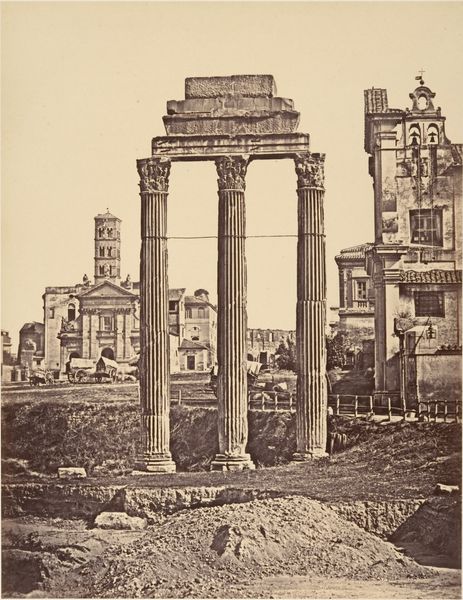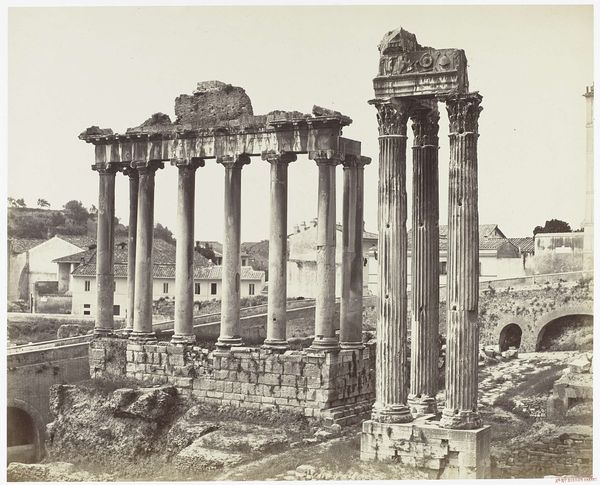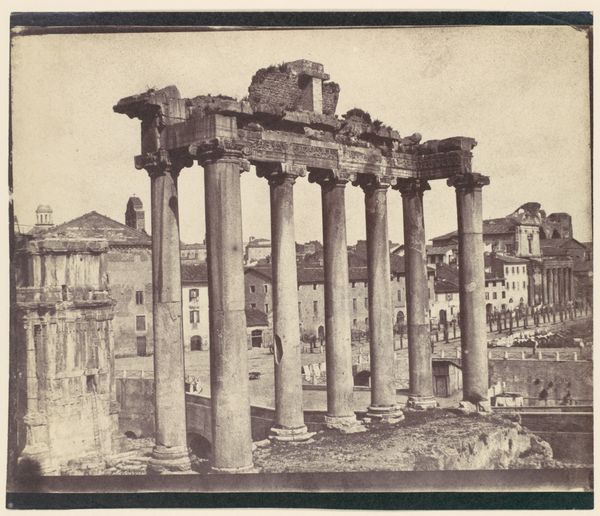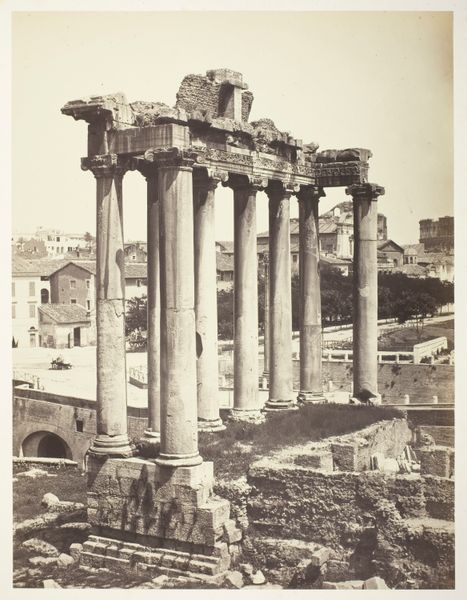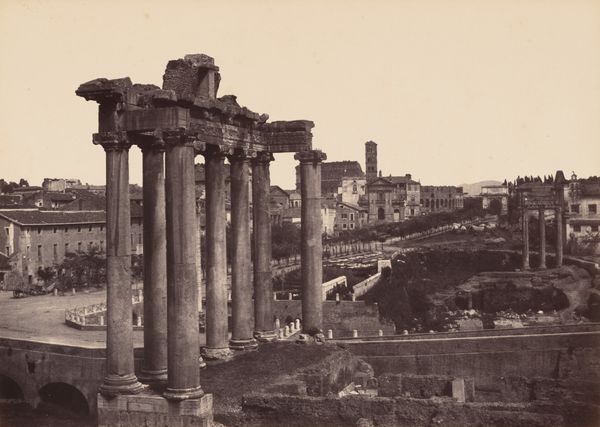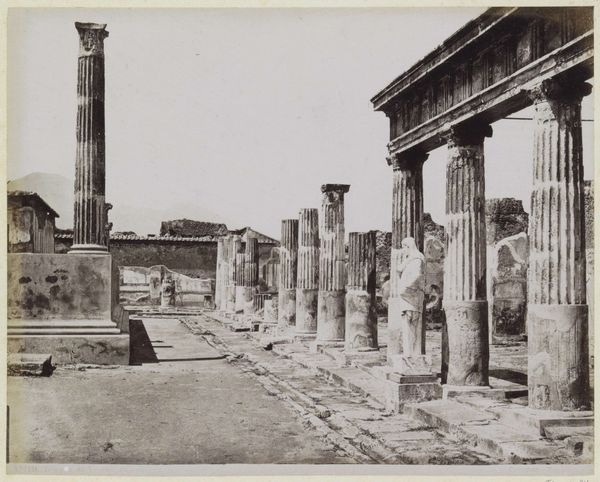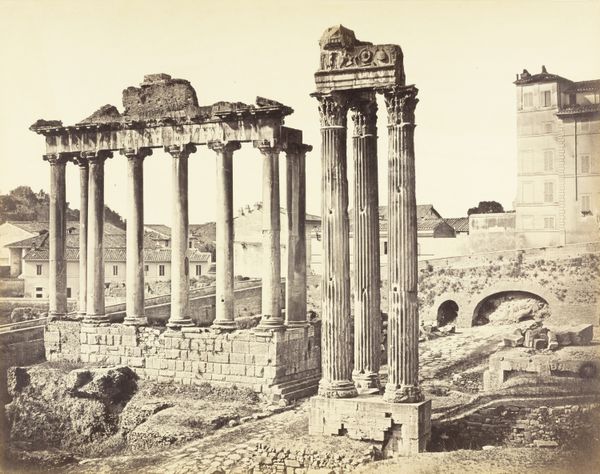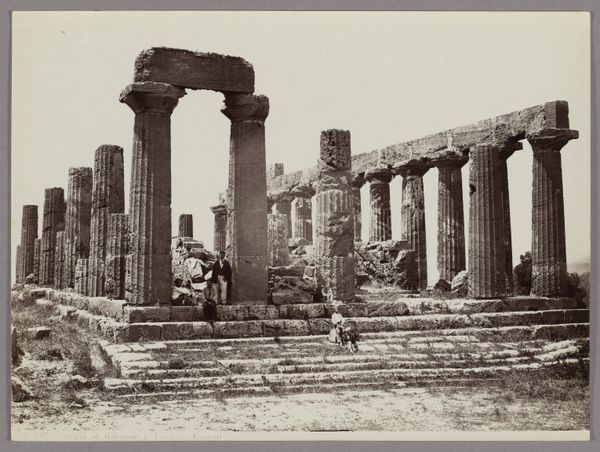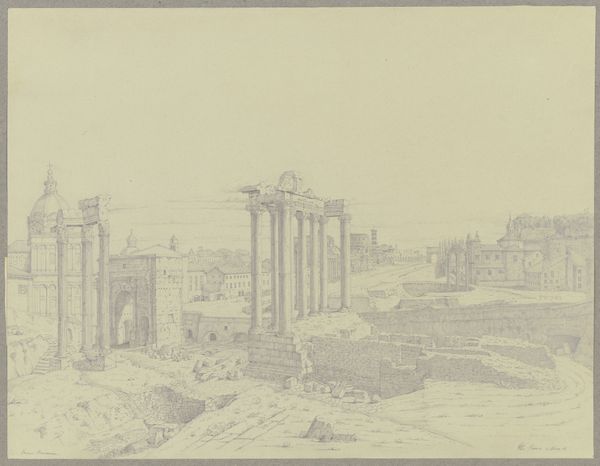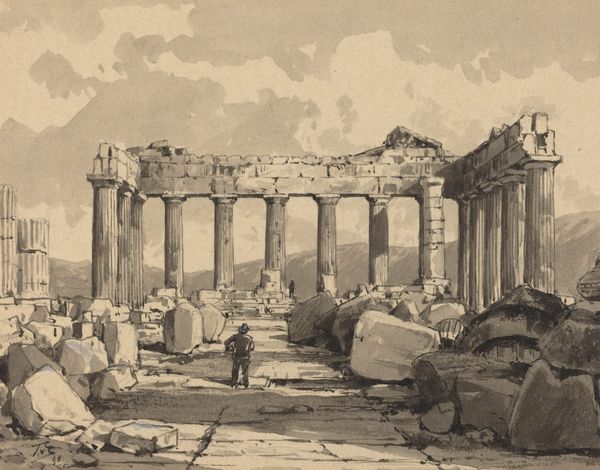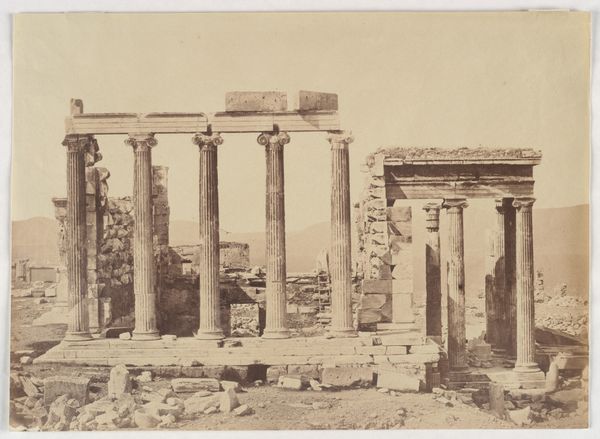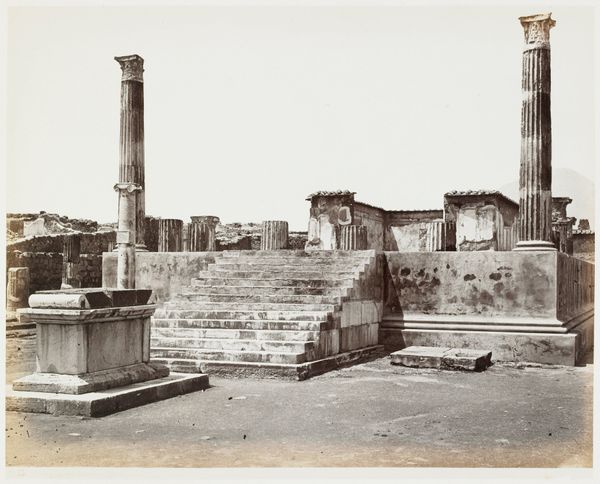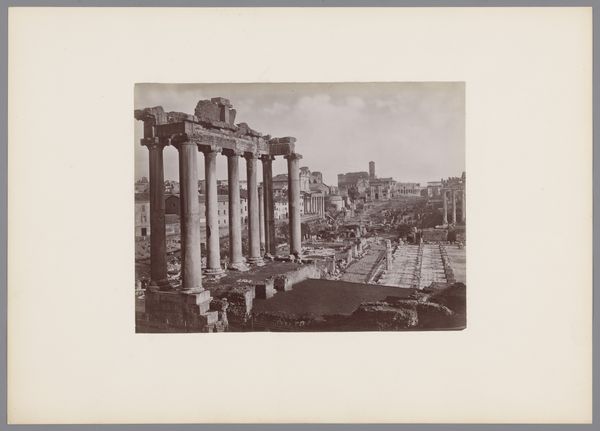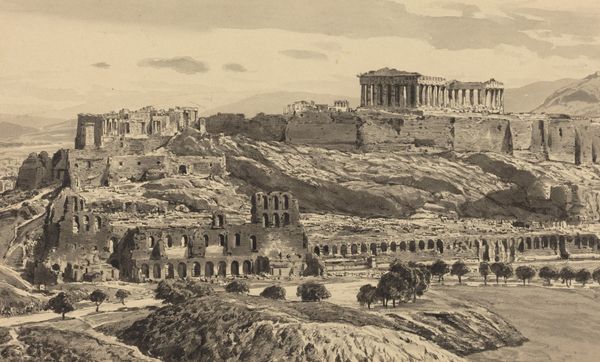
photography, albumen-print
#
greek-and-roman-art
#
landscape
#
photography
#
geometric
#
cityscape
#
albumen-print
#
building
Dimensions: Image: 8 11/16 × 11 5/16 in. (22 × 28.7 cm) Sheet: 12 1/8 × 18 1/2 in. (30.8 × 47 cm)
Copyright: Public Domain
Curator: Immediately, I’m struck by how this image blends monumentality with decay, there's a distinct somberness to the vista, captured beautifully. Editor: Indeed. What we have here is Eugène Constant's "Veduta del Foro Romano," taken between 1848 and 1852. It’s an albumen print offering a view of the Roman Forum that speaks volumes about history and perception. Curator: It does, the skeletal remains of the temples... they stand like forgotten gods presiding over a city that has moved on. Look how Constant frames them against the skyline! It makes one consider the weight of the Roman Empire and how its iconography is embedded into western culture. Editor: And notice how he uses the developing photography. While he depicts ruins and the effects of the passage of time, his materials reflect innovation, an ever forward attitude. The light gives the structures almost a ghostly quality, highlighting the transient nature of power and civilization. This was a period heavily invested in both archeology and photography, shaping views of ancient Rome in meaningful ways for public consumption. Curator: Exactly! It’s interesting how ruins, which symbolize loss, become tourist destinations, points of reverence, and celebration of cultural heritage. It prompts one to consider the inherent nostalgia of landscape art too; yearning for the past, viewing it through rose tinted spectacles. What’s your feeling towards this idea when viewing this image? Editor: That’s such a poignant consideration. The picture certainly plays into that romantic fascination, while offering more direct access to historical sites. The clarity that photography offered over sketches or etchings shaped how Europeans viewed themselves within history, creating, perpetuating, and altering cultural memory. Curator: Very well said. Constant’s photograph, then, becomes not just a view but a historical document shaped by its own era's sensibilities. Editor: A frozen moment infused with layers of historical and cultural significance. Seeing Rome through Constant’s eyes reminds me of how we continue to redefine our connection to the past, as this photographic vista is as important to its modern interpretation, as to understanding its origins.
Comments
No comments
Be the first to comment and join the conversation on the ultimate creative platform.
